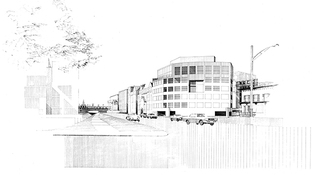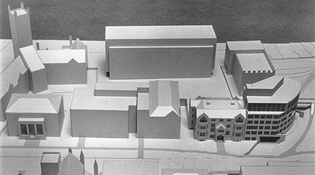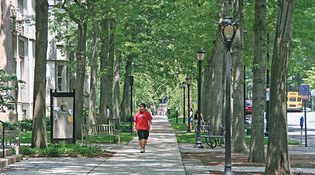 loading
loading
Left on the drawing board Manuscripts and ArchivesView full image The Architectural Archives, University of Pennsylvania by the gift of Robert Venturi and Denise Scott BrownView full image Lee FaulknerView full imageThe numbers didn’t add upIn 1969, for an addition to the math department’s Leet Oliver Memorial Hall on Hillhouse Avenue, Yale launched its first (and only) architectural competition. The winner was the firm of Venturi and Rauch, led by Robert Venturi, who had recently kickstarted a rapidly growing critique of modern building design with his book Complexity and Contradiction in Architecture. Other architects responded to the competition with bold brutalist designs, in line with Yale’s new Art and Architecture Building by Paul Rudolph, as well as Marcel Breuer’s Becton Center. In contrast, Venturi’s design (top and center) was a simple brick box with a bowed front. It reflected the nascent postmodern idea that buildings should be humbler and designers should respond thoughtfully to the surroundings they were building in. It was also practical; the math department chair said he liked Venturi’s floor plan best. An adviser to the competition, Charles Moore—former chair of the architecture department—said the jurors “felt it wasn’t the time or place for ‘important’ buildings anymore.” The building was in fact important and influential in architectural circles. But it never got built. A search for donors to fund it was fruitless, and inflation and budget problems made it impossible to continue. But the math department muddled through, and Venturi went on to a distinguished career. More than 30 years later, in 2003, his firm completed a building at Yale: the medical school’s Anlyan Center.
|
|